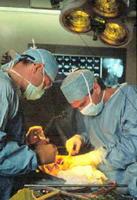
The cardiovascular risks associated with night shift work in medical staff have been suspected for years.
Coronary heart disease (CHD) incidence was investigated in a previous study of 79,109 women from the Nurses Health Study, and observed raised rates among night shift workers, particularly those who had worked for more than 6 years on rotating shifts (51% increased risk). Studies have also demonstrated an increased incidence of the metabolic syndrome in shift workers.
The authors of this study evaluated the effects of a 24 hour physicians on-call duty (OCD) (‘night shift’) compared with a ‘regular’ day at work on:
- 24 hr electrocardiogram (ECG)
- heart rate variability
- blood pressure (BP)
- serum and urine ‘stress markers’
Each physician completed a 24 h OCD and a 24 h control period including a regular 8 hr non-OCD, 30 healthy physicians with a median age of 33.5 years were included.
- ECG showed a higher rate of ventricular premature beats (VPB) during early morning hours during night shift.
- BP monitoring revealed a greater diastolic BP throughout 24 hr associated with a higher rate of systolic BP during sleep time.
- Tumour necrosis factor (TNF) alpha concentrations increased during night shift. Urinary noradrenaline excretion was greater during OCD.
The authors concluded that the study results highlight the association of OCD with an increased risk profile for cardiovascular disease. In addition to the acute effects observed, frequent night-calls over a longer period may lead to sustained alterations in cardiovascular homeostasis.
References:
Arrhythmias and increased neuro-endocrine stress response during physicians' night shifts: a randomized cross-over trial. Markus Rauchenzauner et al. European Heart Journal 2009 30(21):2606-2613; doi:10.1093/eurheartj/ehp268
Night shift work and the cardiovascular health of medical staff. A. Steptoe. Eur. Heart J., November 1, 2009; 30(21): 2560 - 2561.
Image source: A halo around the Moon.
Wikipedia, GNU Free Documentation License.
 How can you make sure future program directors find only the best “you” online? Follow these suggestions when using social media services such as Facebook, Twitter and blogs:
How can you make sure future program directors find only the best “you” online? Follow these suggestions when using social media services such as Facebook, Twitter and blogs:




